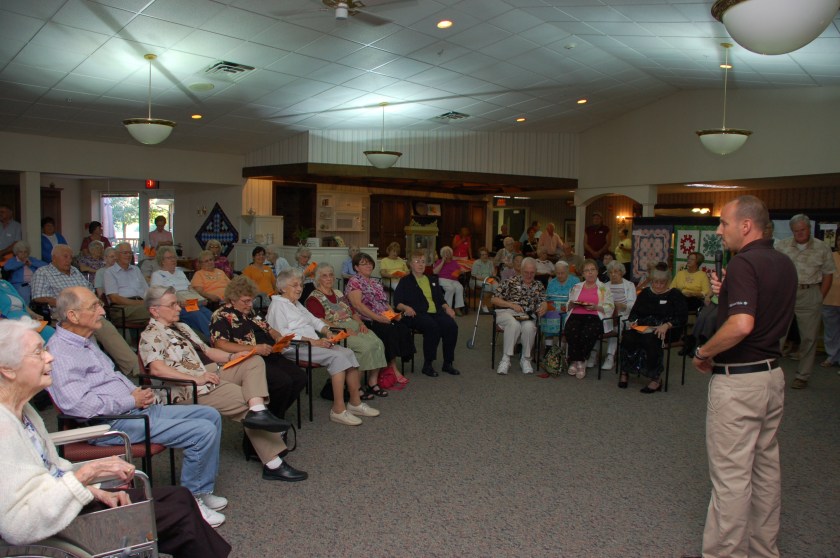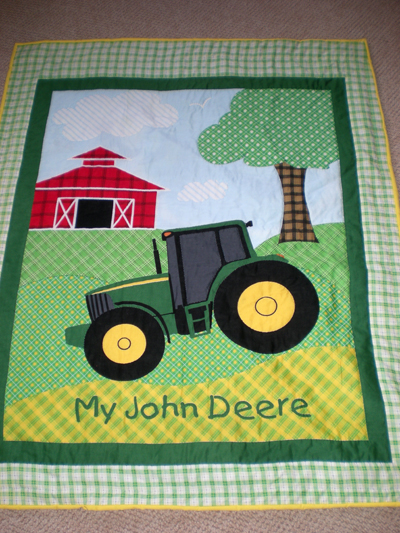
By Bruce Stambaugh
Being career educators, my wife and I both enjoy new learning opportunities. In the year we have been residents of Virginia’s Shenandoah Valley, we have only put a dent in the many educational experiences that are available in the area.
Often times our discoveries are more by circumstance than planning. That makes it all the more fun and exciting.
We often seek out activities and places that pique the interests of friends and family that have come to visit. They frequently match those of our own.
Historic downtown Harrisonburg holds plenty of intriguing places to visit. The Virginia Quilt Museum is just one of them.
Located in an old but well-maintained mansion, the museum has rotating exhibits. When we recently visited there with friends, beautiful old and new quilts were on display.
The multiple galleries in the museum displayed quilts from both noted artists and early Virginia settlers. History, beauty, and even heartache awaited us on three different levels and around every corner of the museum. Each quilt told an aspect of a life we could only imagine.
Please click on the photos to enlarge them.
The quilters’ masterful workmanship and use of vibrant colors more than captivated us. They helped us understand cultures and lifestyles we never could have experienced. I was simultaneously intrigued and awestruck at the skill, the people, and the story each quilt whispered and sometimes shouted.
Using fabric and thread, the artists stitched together tales of the strength of families and community. The use of textiles in many of the quilts represented the importance of fabric in both ancient and current African cultures.
Many quilts glowed both intimacy and joy while others were more subdued, accented with rich browns and smooth cream colors that automatically captivated viewers. You couldn’t help but admire the craftsmanship and splendor.
The exhibits represented five different presentations, three from Africa and two from Virginia. The quilts were a mix of old and new, telling historical and contemporary stories in various patterns, vivid colors, and an assortment of textures.

This unexpected but pleasant surprise was as much a lesson in humanity as it was quilting. One quilter spent a dozen years in several villages in West Africa living with the peoples of the land, observing, studying, living in their culture and participating in their daily activities. Her quilts vividly shared snippets of valued community life.
The older quilts were just as moving, knowing that enslaved women pieced together textiles out of necessity and for practical purposes. The women applied the skills they brought with them from their mother countries. They used their knowledge of piecing, embroidery, applique, and weaving.
Other quilts displayed were from early pioneers who settled in the Shenandoah Valley decades ago. Some of those family names continue in the valley today.
Whether from Africa or Virginia, each represented a window into a new world for me, one of courage and devotion to family, appreciation for their lives and setting in which they lived and live. Artistic creativity expressed joy and perseverance, a turbulent history, and determined survival.
Through these magnificent works, we learned that art, beauty, history, purpose, medium, skill, and storytelling transcend culture, language, location, and race. This exhibit was more than a quilt display. It was a needed and thoughtful spotlight on the human condition.
Quilts reveal colors, fabric, delicate hand stitching, creativity, and craftsmanship. They also can tell compelling stories as well. These particular quilts indeed were tales in tapestry.

(Photos used by permission of the artists.)
© Bruce Stambaugh 2018








You must be logged in to post a comment.